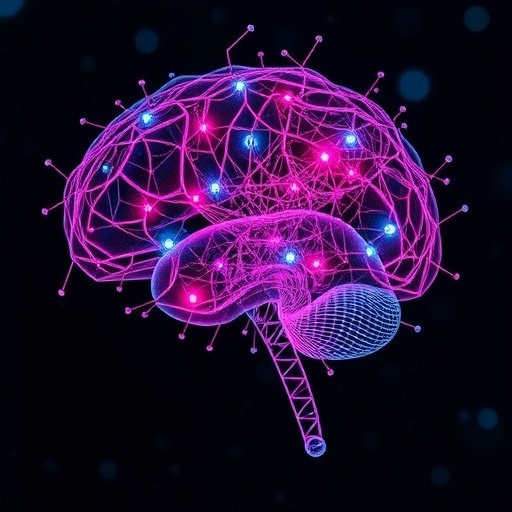In the wake of the COVID-19 pandemic, mental health challenges have surged globally, with anxiety, depression, and insomnia emerging as predominant concerns. A groundbreaking study recently published in BMC Psychiatry has unveiled the power of interpretable machine learning (ML) models in assessing these mental health symptoms following the full reopening of China’s COVID-19 lockdown. This research not only offers critical insights into post-pandemic psychological health but also pioneers a sophisticated approach for identifying and classifying risk factors in large populations.
The study capitalized on a vast dataset collected in 2023 and 2024, encompassing over 65,000 respondents spread across mainland China. The data were strategically partitioned, with approximately 37,000 participants enrolled in the training and test sets, and a separate 28,000 individuals reserved for external validation. Researchers employed established clinical tools for symptom assessment, specifically the Generalized Anxiety Disorder-7 (GAD-7) scale, the Patient Health Questionnaire-9 (PHQ-9), and the Insomnia Severity Index (ISI). These scales ensured rigorous and standardized measurement of anxiety, depression, and insomnia symptoms.
A key breakthrough of this work lies in the integration of seven interpretable machine learning models structured around 27 selected influencing factors. Among these algorithms, the Categorical Boosting (CatBoost) model emerged as the top performer, consistently delivering high accuracy rates across both internal test and external validation datasets. Intriguingly, the model’s Area Under the Curve (AUC) surpassed 0.81 for each of the three mental health conditions, signifying robust predictive capabilities in classifying individuals at risk.
Beyond predictive accuracy, the interpretability of the CatBoost model enabled the researchers to delineate specific risk and protective factors intimately linked to mental health outcomes post-lockdown. Protective elements identified included strong neighborhood relationships, comprehensive knowledge about COVID-19, adherence to a regular sleep-wake schedule, daily intake of vegetables, and adequate sunlight exposure. These factors collectively point to the profound positive effects of social cohesion, health literacy, and lifestyle habits on psychological well-being.
Conversely, the study uncovered that individuals with prior histories of anxiety, depression, or insomnia, as well as those subjected to environmental stressors like external noise at home, exhibited significantly elevated risks. Furthermore, the pervasive fear of COVID-19 infection remained a potent contributor to adverse mental health outcomes. These findings illuminate the lasting psychological scars inflicted by both personal vulnerability and ongoing pandemic-related stressors.
One particularly compelling aspect of this research is its emphasis on modifiable lifestyle and environmental factors. The data suggest that interventions promoting regular sleep patterns, nutritious diets rich in vegetables, and safe outdoor exposure to sunlight could yield substantial mental health benefits. This actionable insight paves the way for public health strategies aimed at prevention and resilience-building in the aftermath of pandemic disruptions.
Moreover, the value of social connectedness cannot be overstated. The study demonstrated that satisfying neighborhood interactions serve as natural buffers against the development of anxiety, depression, and insomnia symptoms. Strengthening community bonds could therefore represent a frontline defense in mitigating mental health crises during and after public health emergencies.
The utilization of interpretable machine learning models distinguishes this research by providing transparent and actionable diagnostic tools. Unlike conventional black-box algorithms, these models furnish clinicians and policymakers with clear explanations for the classification results and risk factor influences. This interpretability is crucial for building trust and ensuring responsible deployment of AI in mental health care.
Additionally, the research highlights the importance of external validation in machine learning applications. By testing the model on an independent dataset collected months after the initial training, the authors confirmed the generalizability and consistency of their findings, addressing common pitfalls of overfitting and biased predictions frequently encountered in AI research.
Importantly, the study underscores the complex interplay between biological, psychological, and environmental factors in shaping mental health during unprecedented societal upheavals. The simultaneous consideration of historical mental health conditions and contemporary lifestyle elements enriches our understanding of vulnerability and resilience in high-stress contexts like post-lockdown transitions.
This pioneering investigation invites further exploration into tailored interventions based on machine learning insights. By identifying specific at-risk subpopulations and modifiable determinants, it opens avenues for targeted mental health programs, personalized therapeutic strategies, and data-driven policy initiatives aimed at enhancing population well-being.
Finally, the findings carry profound implications for global health, as the pandemic’s psychological toll resonates far beyond China. The methodological blueprint established here can be adapted and replicated across diverse cultural and demographic landscapes to unravel the multifaceted challenges of post-pandemic mental health worldwide.
In conclusion, this study signifies a pivotal advancement at the intersection of artificial intelligence and psychiatry. Through sophisticated, interpretable machine learning techniques applied to expansive population data, it lays bare the critical factors underpinning anxiety, depression, and insomnia symptoms after a major public health disruption. Its blend of technical rigor and practical relevance holds immense promise for shaping mental health interventions in a world still navigating the lingering effects of COVID-19.
Subject of Research: Mental health classification and risk factor identification for anxiety, depression, and insomnia symptoms in mainland China post COVID-19 lockdown using interpretable machine learning models.
Article Title: Interpretable machine learning for classification and risk factor identification of anxiety, depression, and insomnia symptoms after the full opening of China’s COVID-19 lockdown
Article References:
Li, Z., Li, J., Zhang, A. et al. Interpretable machine learning for classification and risk factor identification of anxiety, depression, and insomnia symptoms after the full opening of China’s COVID-19 lockdown. BMC Psychiatry (2025). https://doi.org/10.1186/s12888-025-07569-7
Image Credits: AI Generated




